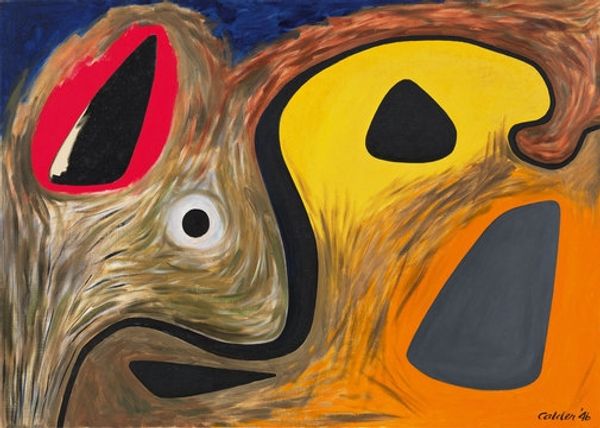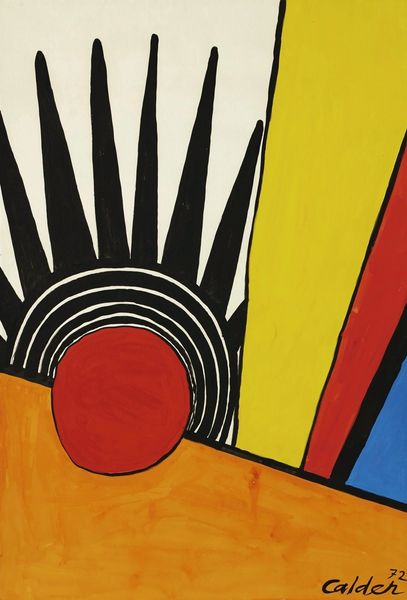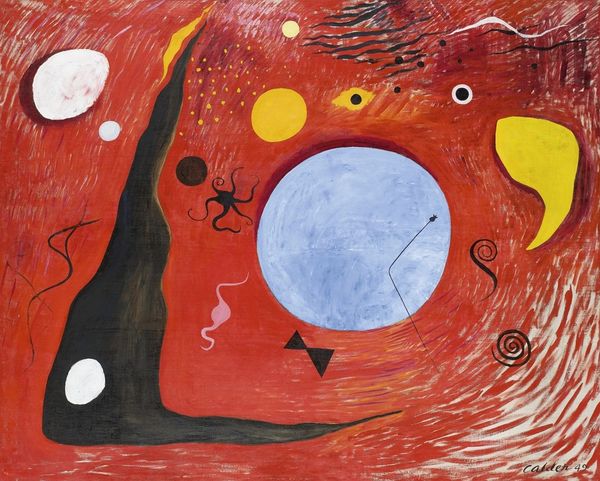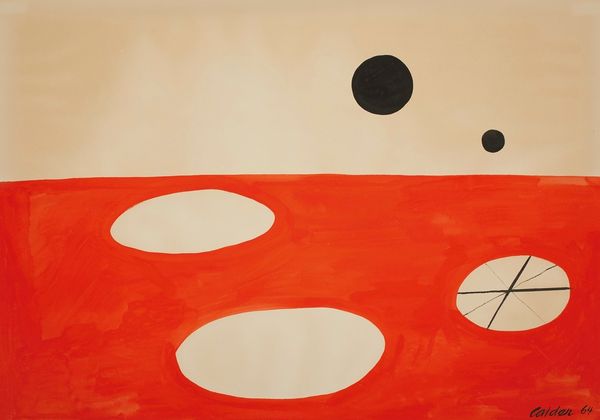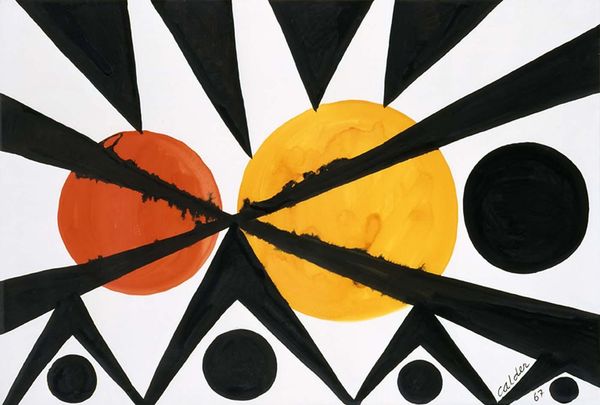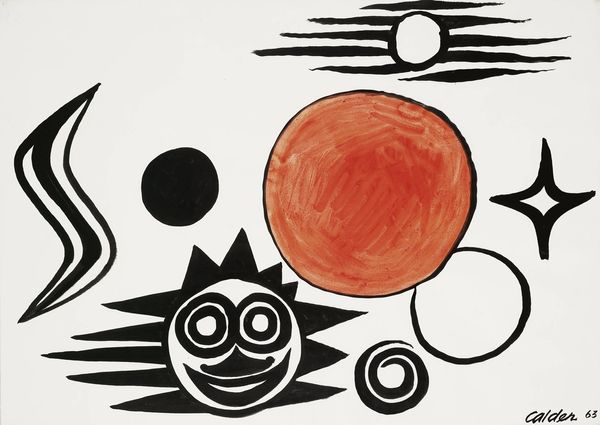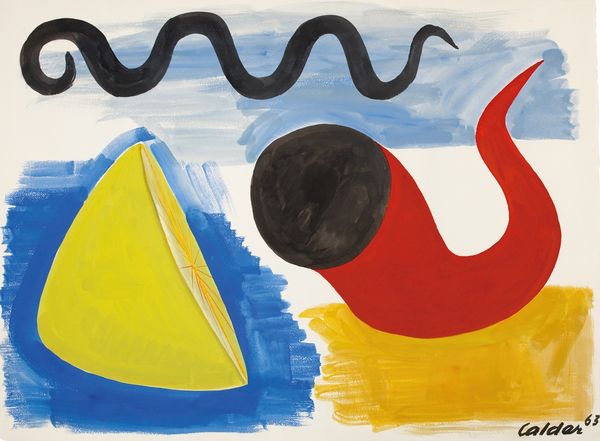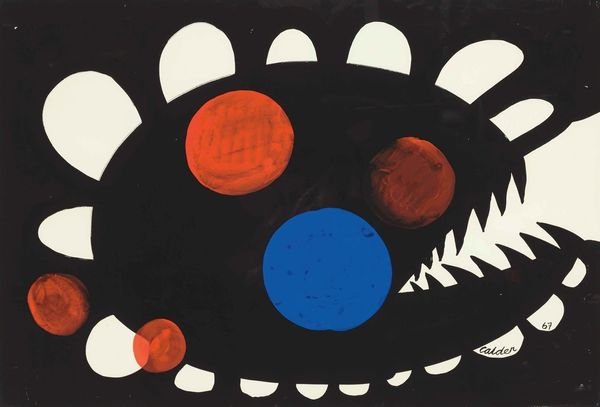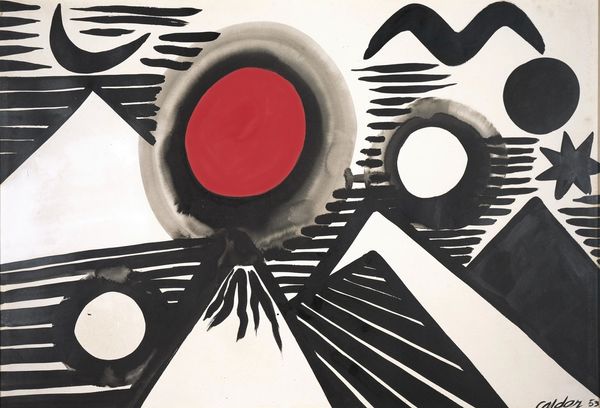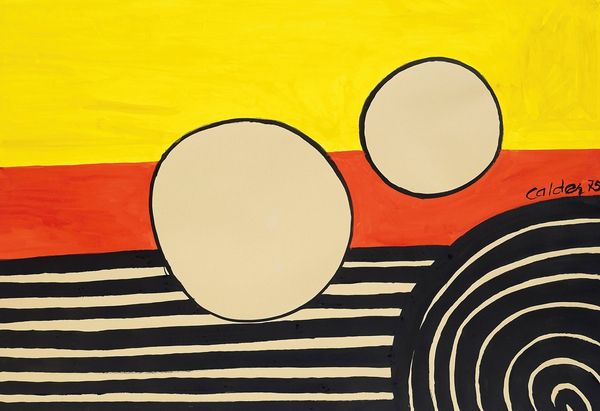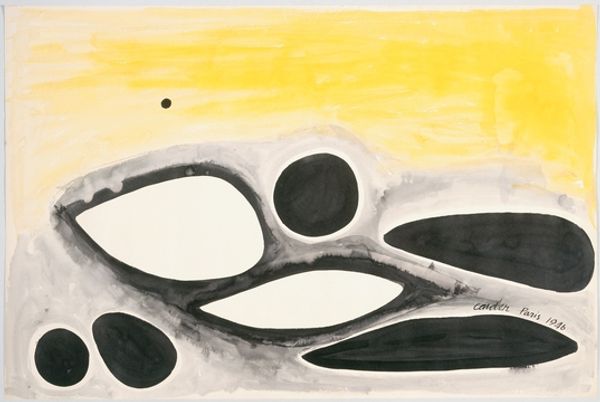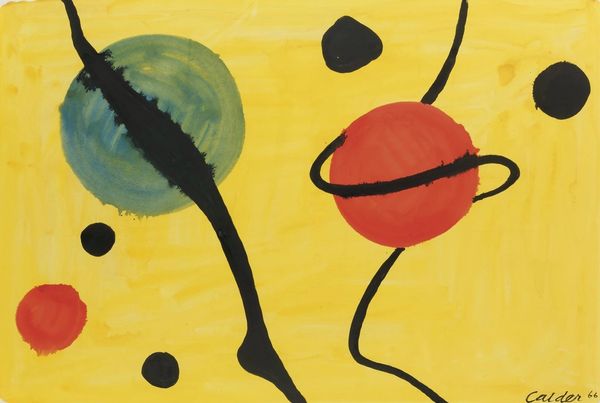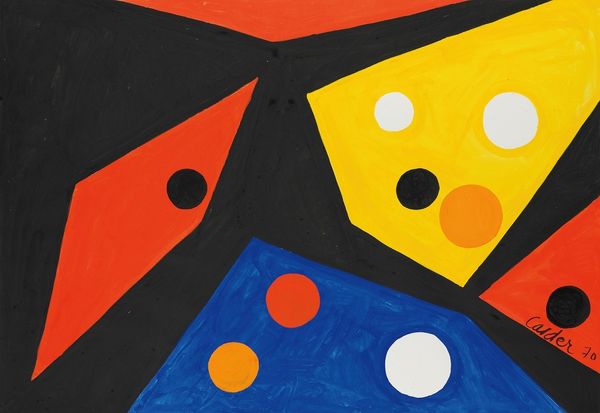
painting, watercolor
#
abstract-expressionism
#
abstract expressionism
#
abstract painting
#
non-objective-art
#
painting
#
abstract
#
form
#
oil painting
#
watercolor
#
geometric-abstraction
#
modernism
Copyright: Modern Artists: Artvee
Curator: Looking at Alexander Calder’s “Black Boomerangs, Red Sun” from 1946, I am immediately struck by its elemental power. The red sun feels like a primal force. Editor: I see it too. Though with its thin watercolor washes on paper, there is a real economy of means at play. This feels lighter than one might expect, considering those hefty boomerang shapes. What was Calder working through at this time material wise? Curator: The title evokes themes of cosmic order, or perhaps disruption, reflected through its biomorphic shapes. Calder, even early on, was interested in how basic shapes influenced art. Think about his Circus. The black boomerangs – do you see them as potentially returning? Editor: Fascinating! Yes, there's a potentiality of motion there. And considering he created this piece in 1946, that makes the process itself quite powerful, as paper was incredibly limited and heavily regulated right after World War II. The colors might feel joyful on their face but they stand for rationing and making do, in some respect. Curator: That rationing almost lends the colors a further intensity, knowing the lack they arose from. It underscores that interplay between form and void and that search for fundamental harmony which feels universal. The blue is almost playful next to that aggressive Red sun. Editor: Absolutely. He wasn't able to rely on heavy impasto, to conjure something so evocative speaks to the ingenuity required when material options are limited. I keep coming back to that labor! It's far from carefree. Curator: Exactly. Even these simple forms resonate because they contain layers of struggle and potential – like seeds containing life. The boomerangs appear suspended, in this almost surreal, watery space. What might he have had in mind using geometric abstraction? Editor: Perhaps that speaks to the search of understanding postwar conditions through abstract language, like a universal sign. As far as it can move across borders to find peace? It's beautiful how what might seem simple reveals the deeper meanings behind Calder’s choices of media during wartime. Curator: Yes, indeed. It truly demonstrates how form can speak volumes, resonating long after its creation. The use of such minimal elements achieves a truly potent message. Editor: I concur; reflecting on its wartime context highlights both the limitations and possibilities inherent in materials.
Comments
No comments
Be the first to comment and join the conversation on the ultimate creative platform.
